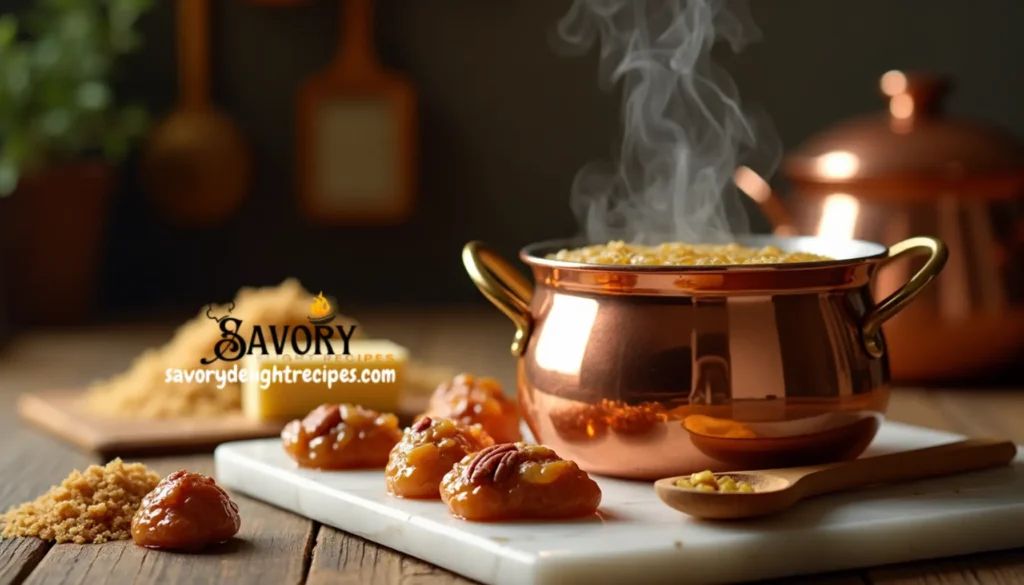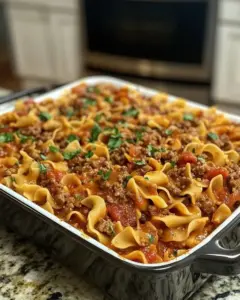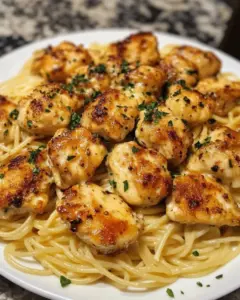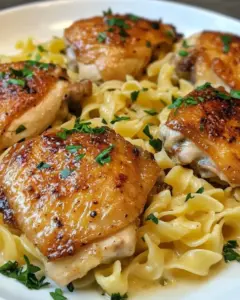Last Updated on 09/06/2025 by SAVORY DELIGHT RECIPES LLC
Many people think praline-making belongs in professional kitchens. You’ll find it’s actually quite simple to create these delectable treats at home. These homemade candies take just 30 minutes to make, and they rival any candy shop’s offerings.
Perfect pralines need simple ingredients like brown sugar and pecans. The process combines proven techniques that lead to great results every time. This piece shows you everything – from choosing quality ingredients to getting the right cooking temperature and texture. The recipe works well for both novice candy makers and experienced home chefs, making it a rewarding project for anyone’s kitchen.
Gather Your Ingredients
The right ingredients are significant to create perfect pralines before starting the cooking process. You need all ingredients ready for this delectable treat.
Essential Ingredients for Pecan Pralines
Let’s gather these ingredients to create delicious classic pecan pralines:
| Ingredient | Amount |
|---|---|
| Pecans | 2 cups |
| Granulated sugar | 1½ cups |
| Brown sugar | ½ cup |
| Heavy cream or evaporated milk | 1 cup |
| Butter | 4 tablespoons |
| Vanilla extract | 1 teaspoon |
| Salt | ½ teaspoon |
| Baking soda | ¼ teaspoon |
Tips for ingredient selection
Sugar Selection: White and brown sugar together play a vital role in creating the perfect texture. A grainy texture results from using brown sugar alone, and white sugar by itself needs extra ingredients to caramelize properly.
Cream Options: The dairy component gives you some flexibility. Evaporated milk produces the most consistent results. Heavy whipping cream, half-and-half, or whole milk work too, but beginners should stick with evaporated milk.
Nut Considerations: Here’s what you need to know:
- Let frozen pecans reach room temperature for 1-2 hours before use
- Fresh, high-quality pecans will give you the best flavor
- Your choice of whole pecans or pecan halves works well
Important Preparation Tips:
- The cooking process can’t be paused, so measure everything beforehand
- The humidity level will substantially affect your final result
- A cool, dry day is ideal for making pralines. If you can’t wait, cook the syrup slightly above the recipe temperature
Pro Tip: First-time praline makers should keep extra ingredients ready. This way, you can make another batch without running to the store if needed.
Keep in mind that pralines need specific ingredients to turn out well. The traditional recipe components are a great way to get that perfect, creamy praline texture you’re after.
Prepare Your Workspace
Success in praline-making begins with a hosted workspace and the right tools at your fingertips. Let’s transform your kitchen into a perfect setup that ensures a smooth cooking experience.
Essential tools and equipment
These fundamental tools will help you create perfect pralines:
| Essential Tool | Purpose |
|---|---|
| Digital Thermometer | Will give precise temperature control |
| Medium Saucepan | To cook praline mixture |
| Baking Sheets | To set pralines |
| Parchment Paper | Creates non-stick surface |
| Whisk | To blend mixture smoothly |
| Spatula | Prevents ingredients from sticking |
Temperature Control: Your digital thermometer should read up to at least 302°F to make pralines. A long stem will protect you from burns during temperature checks.
Surface Preparation: Standard baking sheets work perfectly at home to make pralines, though professional kitchens might use metal frames. A layer of parchment paper or silicone mat on your sheets will make removal easy.
Setting up to Work Smarter
A well-laid-out workspace will substantially improve your praline-making experience. Here’s the quickest way to set up:
- Workspace Organization:
- Clear your counter space fully
- Keep your stove and cooling area within reach
- Create a designated spot for your thermometer and tools
- Place ingredients at room temperature nearby
- Storage Solutions:
- Use clear containers to see contents better
- Add clear labels to all containers
- Keep your go-to tools within reach
- Store temperature-sensitive items away from heat
Pro Tips for Workspace Efficiency:
- Choose a cool, dry spot away from sunlight
- Arrange tools in the order you’ll use them
- Have a clean, damp cloth ready for spills
- Work in good lighting to read temperatures accurately
A cluttered workspace reduces your productivity. Take time to prepare before you begin. This preparation makes praline-making smoother and more enjoyable.
Toast the Pecans
Properly toasted pecans play a significant role in elevating pralines from good to exceptional. The nuts’ natural flavors intensify during this simple process and create the perfect foundation for homemade pralines.
Proper toasting technique
Two reliable methods exist for toasting pecans, and each offers unique advantages:
| Method | Temperature | Time | Best For |
|---|---|---|---|
| Oven | 350°F | 5-10 minutes | Large batches |
| Stovetop | Medium heat | 2-5 minutes | Quick results |
The oven method requires spreading pecans in a single layer on a baking sheet, which will give you even toasting and prevent burning. Note that a gentle stir halfway through the process helps achieve better results.
The stovetop method works best with a dry skillet over medium heat. A wooden spoon helps keep the pecans moving to prevent scorching. This approach needs more attention but produces faster results.
Key indicators your pecans are perfectly toasted:
- Your kitchen fills with a rich, nutty aroma
- The pecans’ color deepens slightly
- The nuts become dry and crisp
- The toasted fragrance wafts out at the time you open the oven door
Importance of toasting for flavor
Toasting is not optional – it lifts your pralines to a professional level through flavor transformation. Raw pecans often taste waxy and bland. The toasting process awakens their natural oils and creates complex flavor notes.
The process boosts three significant elements:
- Flavor: Develops a deeper, more intense nutty taste
- Texture: Creates a satisfying crunch that persists in your pralines
- Aroma: Releases natural oils that contribute to the overall taste experience
Important Tips:
- Raw pecans work better than pre-roasted ones
- Toast pecan halves first, then chop if needed
- Stay near the oven while toasting – nuts can burn in under a minute
- Let the pecans cool completely before making your praline recipe
The natural oils released during toasting help coat the pecans with praline mixture more effectively. This creates better adhesion of the sugary coating and results in more delicious pralines.
Watch your nuts closely, especially as they near the end of toasting time. They can quickly turn from golden brown to burnt, especially around your baking sheet’s edges. Your careful attention at this stage will reward you with pralines that have a rich, complex flavor profile.
Make the Praline Syrup
The perfect praline syrup combines science and sweetness during your candy-making adventure. This significant step determines your pralines’ texture and consistency. The outcome will either be smooth and creamy or grainy and crystallized.
Combining and cooking ingredients
The culinary magic starts when you blend your ingredients perfectly. Follow these steps:
- Mix brown sugar, granulated sugar, salt, corn syrup, and milk in your saucepan
- Give it a gentle stir to moisten the sugars and keep sugar away from the pot’s sides
- Place it over medium heat and stir often until sugar dissolves completely
- Drop in the butter after sugar dissolves
- Let the mixture cook until it reaches a boil
Pro Tips for Perfect Syrup:
- The syrup’s texture and richness improve with whole milk
- Dark corn syrup helps stabilize your mixture and stops crystallization
- A careful stir before boiling prevents unwanted sugar crystals
- A clean pot’s sides are essential to avoid crystallization
Reaching the right temperature
Getting the temperature right is vital to making successful pralines. Your target is the “soft-ball stage,” which happens between 234°F and 240°F. Here’s a simple temperature guide:
| Stage | Temperature | What to Expect |
|---|---|---|
| Sugar Dissolution | Below 234°F | Complete dissolution before boiling |
| Soft-Ball Start | 234°F | Mixture forms soft, flexible ball |
| Perfect Praline | 239°F | Ideal temperature for smooth results |
| Warning Zone | Above 240°F | Risk of hard, grainy texture |
Temperature Tips That Matter:
- Pick a reliable candy thermometer that clips to your pot
- Check your thermometer’s accuracy in boiling water – it should read 212°F
- Heat the mixture to exactly 239°F to get smooth, creamy results
- The process typically takes 10-15 minutes
A dry day works best since humidity affects your results. Sugar crystals might form on your pan’s sides – just wipe them down with a wet pastry brush.
A Key Point: Patience makes perfect pralines. Heating to exactly 239°F instead of 234°F determines whether your pralines turn out smooth or grainy. Your patience will reward you with candies that melt in your mouth.
The next vital step begins when you hit the target temperature. Double-check your reading before removing the pan from heat. Your attention to detail now builds the foundation to perfect pralines.
Form and Cool the Pralines
The most thrilling moment of your praline adventure happens when golden syrup takes shape into perfect candies. Your hands need to move fast and your eyes must stay sharp, but you’ll handle this part easily!
Dropping and shaping techniques
Beautiful pralines depend on your dropping technique and perfect timing. Let me walk you through the steps to create perfectly shaped pralines:
- Start by lining your baking sheets with parchment paper
- A cookie dough scoop or two dessert spoons will help you achieve consistent sizes
- Take heaping tablespoons of mixture and drop them onto your prepared sheets
- Speed matters – you need to work quickly to keep the right consistency
- Space your drops about 2 inches apart so they don’t merge together
Consistency Check Guide:
| Appearance | What It Means | Action Needed |
|---|---|---|
| Matte Finish | Perfect consistency | Continue dropping |
| Too Shiny | Not ready to drop | Wait 30 seconds |
| Starting to Harden | You’re working too slowly | Add hot water |
Pro Tip: Your mixture might start to harden before you finish. Don’t worry! Just add a teaspoon of hot water at a time and stir until the mixture becomes workable again.
Cooling and setting process
Your best friend during the cooling phase is patience. Pralines need proper setting time to achieve that perfect texture – somewhere between fudge and candy. They should never be as hard as brittle.
Perfect Setting Indicators:
- Your pralines should maintain their shape, particularly in the middle
- The surface needs a matte finish instead of shine
- You’ll want a fudge-like texture, not hard candy or chewy caramel
Here’s a simple timeline to follow:
- Let them set for at least 30 minutes
- Full hardening might take up to 24 hours
- You can use refrigeration, but we don’t recommend it
Important Setting Tips:
- Pick a cool, dry spot for setting
- Leave pralines undisturbed while cooling
- Check firmness by lifting an edge gently
- More time helps if they crumble
Room temperature in an airtight container works best for storage. Your pralines will stay fresh for:
- 2 weeks on the counter
- 2 months in the freezer
Troubleshooting Guide: Humidity could be your biggest problem if pralines aren’t setting right. Here’s what to think over:
- Keep the room cool
- Avoid moisture exposure
- Find a dry spot
- Use sealed containers
Note that some pralines might show more crystallization than others – that’s the charm of homemade treats. Each piece tells its own story, and great taste means you’ve created something special.
Storage and Serving Suggestions
Good storage will give your handcrafted pralines their delectable texture and flavor that lasts for weeks. Here are the best ways to store and serve these sweet treats and maximize your enjoyment.
Proper storage methods
Perfect pralines need the right environment to maintain their delicious taste and texture. These treats require specific conditions to stay fresh:
| Storage Method | Duration | Temperature | Humidity |
|---|---|---|---|
| Room Temperature | Up to 2 weeks | 60°F | 50-65% |
| Freezer | Up to 3 months | Below 32°F | Sealed container |
Room temperature storage requires careful attention to detail. Let your pralines cool completely before placing them in an airtight container. Place wax paper between layers to prevent them from sticking together. Different types of candies should be stored separately to preserve their unique flavors and textures. A cool, dry spot away from sunlight works best.
Freezer Storage Tips: Your pralines can last up to 3 months in the freezer with proper preparation. Start by wrapping each praline in aluminum foil. The wrapped treats should go into an airtight container lined with wax paper on the bottom and sides. Make sure the container seals completely to keep frost away.
Thawing Guidelines: Frozen pralines need proper thawing to taste their best. Move them to your refrigerator 24 hours before you plan to serve them. Let them sit at room temperature for 30 minutes before eating. The container should stay sealed until they thaw completely to prevent moisture from ruining their texture.
Creative serving ideas
Your pralines can go from simple sweets to spectacular dessert experiences with these innovative serving suggestions:
Dessert Enhancement Ideas:
- Cheesecake Topping: A sprinkle of crumbled pralines on your favorite cheesecake creates amazing texture contrast
- Ice Cream Companion: Break them into pieces and scatter over vanilla ice cream
- Dessert Bar Addition: Mix them into your favorite baked goods to add extra flavor
Gifting Presentation: These elegant packaging ideas will make your pralines perfect for gifting:
- Individual cellophane wrapping with decorative ribbons
- Decorative tins lined with cupcake liners
- Cookie jars with layers and personal notes
- Gift baskets paired with complementary treats
Party Presentation Guide:
| Occasion | Serving Style | Presentation Tips |
|---|---|---|
| Casual Gatherings | Platter style | Mix with other desserts |
| Formal Events | Individual wrapping | Use metallic papers |
| Holiday Gifts | Decorative tins | Layer with wax paper |
| Party Favors | Small bags | Add personalized tags |
Health-Conscious Serving Tips: You can include pralines in a balanced treat selection because:
- Pecans pack essential vitamins and minerals
- They’re naturally cholesterol-free
- Small portions satisfy sweet cravings quickly
Creative Combinations: Your praline experience gets better when paired with:
- Fresh fruit creates texture contrast
- Coffee or espresso balances the flavor
- Vanilla ice cream adds temperature variation
- Chocolate sauce makes decadent desserts
Keep in mind your audience when serving pralines. A simple platter works great for casual gatherings, while formal events might need individual packaging or elegant presentation. Pralines fit perfectly anywhere, from afternoon snacks to elegant dinner party desserts.
Storage Troubleshooting Guide: Watch out for these storage issues with your pralines:
- Softening: Cut down storage humidity
- Hardening: Check your container’s seal
- Sticking: Place more wax paper between layers
- Frost formation: Make sure containers seal properly
By doing this, your homemade pralines will stay delightful for weeks. The right storage keeps their signature texture and taste perfect whether you eat them alone or add them to elaborate desserts.
Conclusion
Praline making combines culinary science with sweet artistry. Anyone can create these beloved Southern treats at home with proper temperature control, ingredient selection, and the right technique. Your success relies on precise steps – toast pecans to maximize flavor, reach the exact soft-ball stage at 239°F, and allow enough cooling time that creates the signature texture.
These homemade candies are a great way to get lasting memories and share special moments with loved ones. This detailed guide gives you the knowledge to craft perfect pralines in your kitchen. Begin your praline-making experience now. Practice will help you grow from novice candy maker to confident confectioner, and you’ll create treats that rival those from professional candy shops.
FAQs
What are the primary ingredients used in making praline?
Praline primarily consists of nuts and sugar, with nuts making up at least 50% of the mixture. Commonly used nuts include hazelnuts and almonds. Optional additions may include vanilla, either as a bean or natural extract, and lecithin.
How can I ensure that pralines harden properly?
To harden pralines, first whisk in powdered sugar to the candy mixture, allowing it to thicken slightly. This process should take about a minute to reach the desired consistency. Then, spoon the mixture onto parchment paper laid out on a flat surface and let it cool and set for at least 30 minutes.
What is the shelf life of homemade pralines?
Once fully cooled, homemade pralines should be stored between layers of waxed paper in an airtight container. They can be kept at room temperature in a cool, dry place for at least five days. Pralines are also excellent for shipping, making them a great option for care package gifts.
What ingredients are used to make praline topping?
Praline topping is made by melting butter in a heavy saucepan, then stirring in brown sugar, pecans, and nutmeg. This mixture should be stirred constantly and brought to a boil, then allowed to simmer until it thickens slightly, which typically takes about 5 minutes.





Comments are closed.